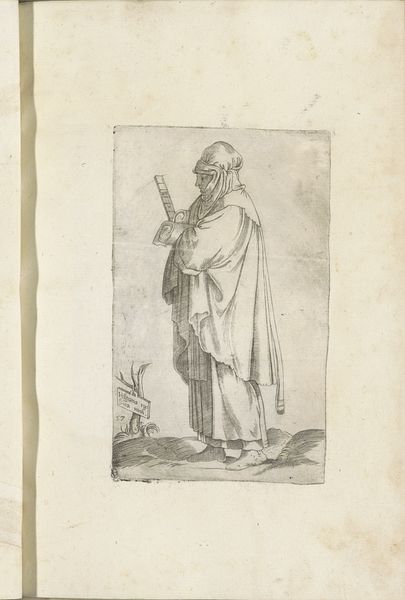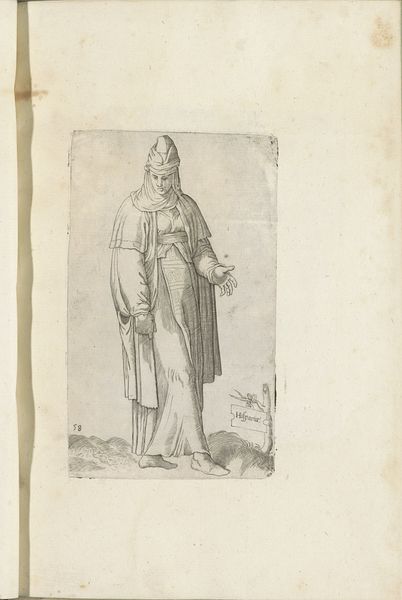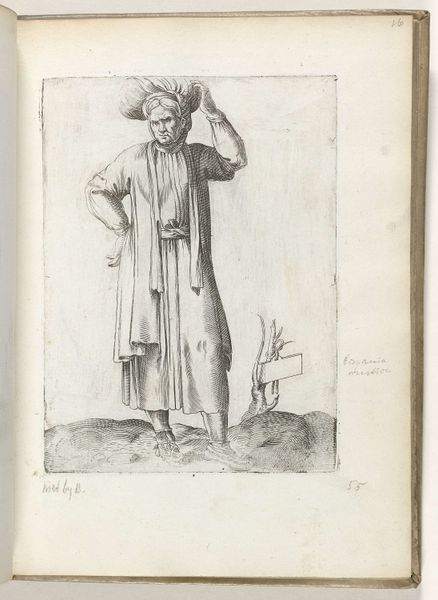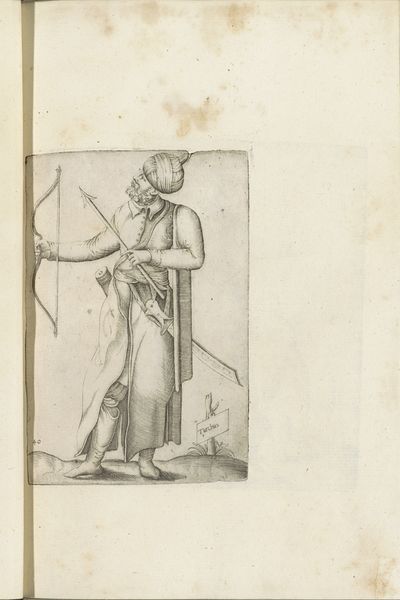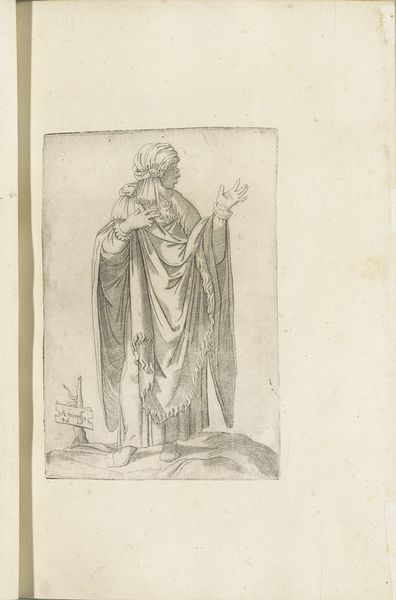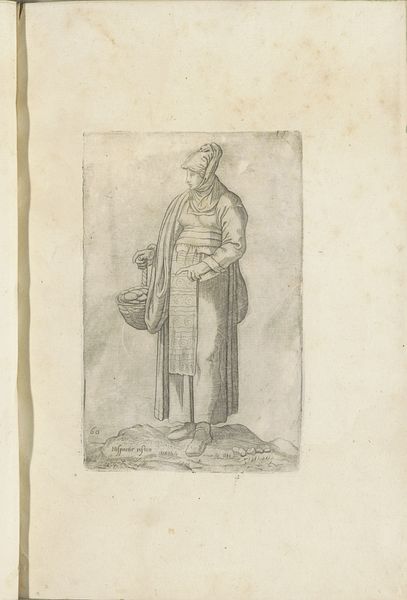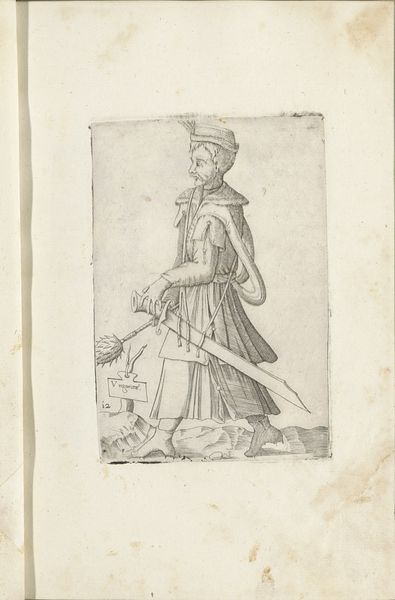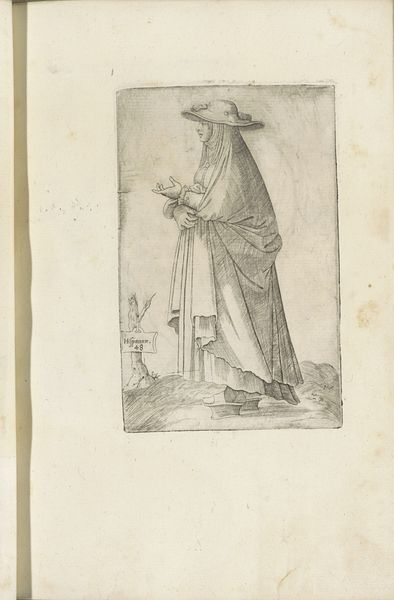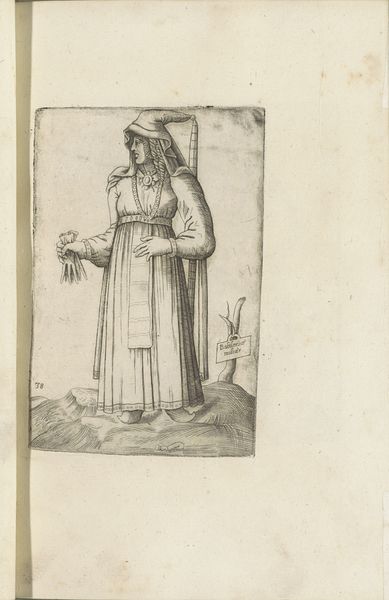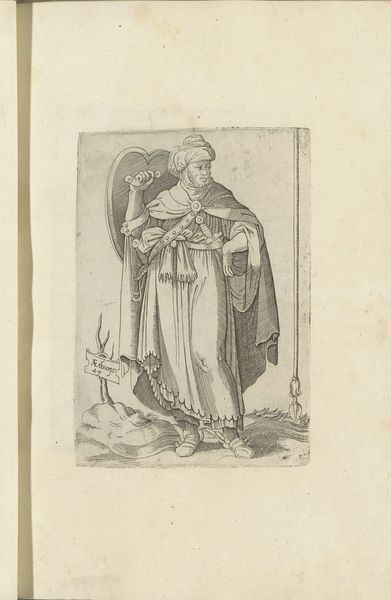
drawing, print, engraving
#
portrait
#
drawing
#
medieval
# print
#
figuration
#
italian-renaissance
#
engraving
Dimensions: height 265 mm, width 195 mm, height 150 mm, width 105 mm
Copyright: Rijks Museum: Open Domain
Curator: Here we have "Spaanse boerenvrouw," a 1569 engraving by Ferando Bertelli, currently residing here at the Rijksmuseum. What’s your initial take on it? Editor: The figure strikes me as withdrawn. Her posture, the way she’s facing away... it suggests a deep sense of introspection or perhaps resignation. And the muted tones only amplify that feeling. Curator: It’s a beautiful study of a woman of the land in Renaissance-era Spain. Notice how the folds of her clothing almost mimic the topography of the landscape. There’s a strong connection being drawn here. The headscarf or turban could have a symbolic meaning about religious expression too, as well as societal standing. Editor: That’s interesting. Considering the period, what were the societal expectations of women, particularly in rural settings? This could speak to a struggle for autonomy, or a commentary on their constrained roles. Also, considering the Spanish Empire at that time, were there implications of Spanish imperialism influencing this artist and work? Curator: Precisely. It’s a symbol. While Bertelli was Italian, he undoubtedly witnessed the ripple effects of Spanish power. This woman, with her simple attire, is perhaps meant to represent not just a type but the embodiment of the nation. Think about it – the Earth Mother archetype, bearing witness to the era. Editor: I appreciate how this artwork humanizes a peasant figure often erased from historical narratives, positioning her instead as someone who actively embodies and understands this painful history. What does the inclusion of a landscape element convey here? What about the broken branch and a name tag just to the right of her figure? Curator: I am interested that it isn't only to suggest geography and identity, but as if the woman rises from, is part of, or at one with, the landscape around her. The branch looks purposefully symbolic in relation to a broken lineage, one perhaps forced upon the locals via religious, gender, or social barriers. I interpret that Bertelli is honoring the history, life, and labor of this woman. Editor: I agree with you on those elements, because with closer consideration, the figure isn't static but looks to be striding along, ready for what lies ahead. In a sense, she strides forth with new determination to challenge the burdens weighing down her community. It provides more clarity than darkness at a key historical moment. Curator: It does offer clarity and possibility. This small engraving holds within it such a grand historical and symbolic dialogue! Editor: Yes, and reminds us that images, even those seemingly simple, carry complex, evolving meanings over time.
Comments
No comments
Be the first to comment and join the conversation on the ultimate creative platform.
